
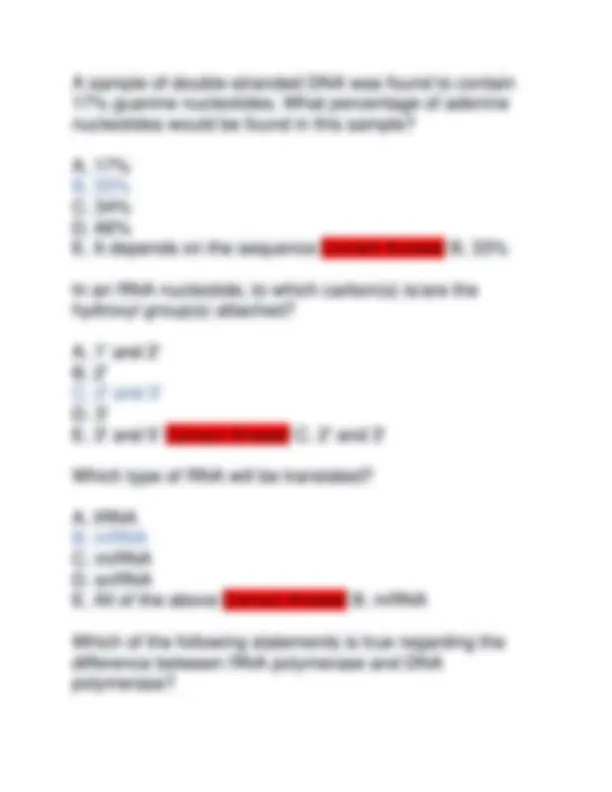
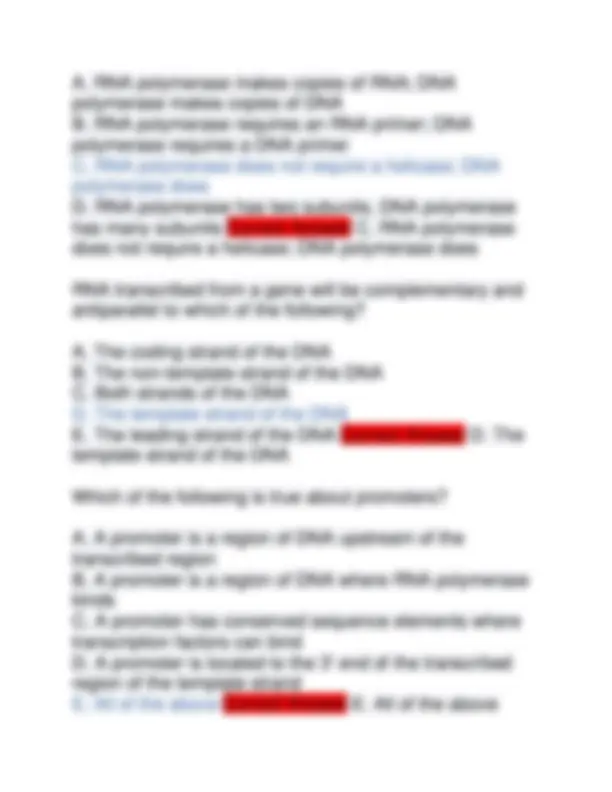
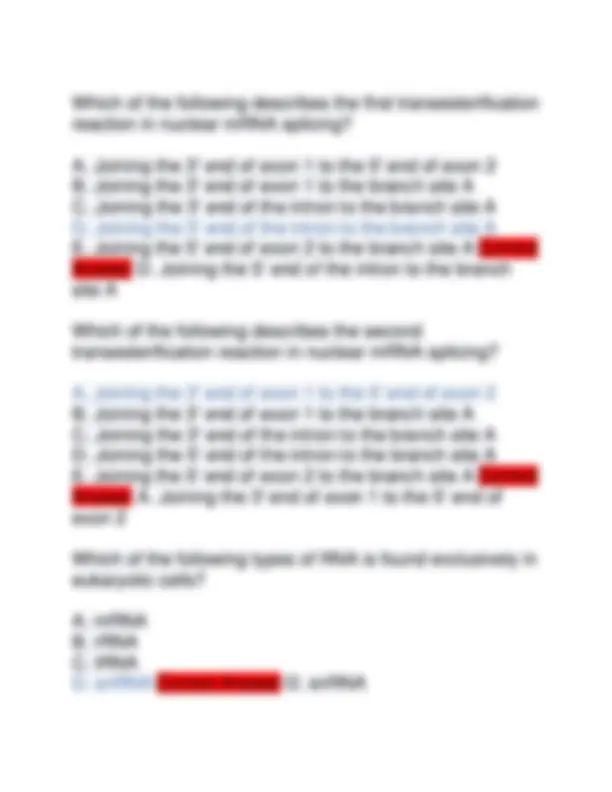
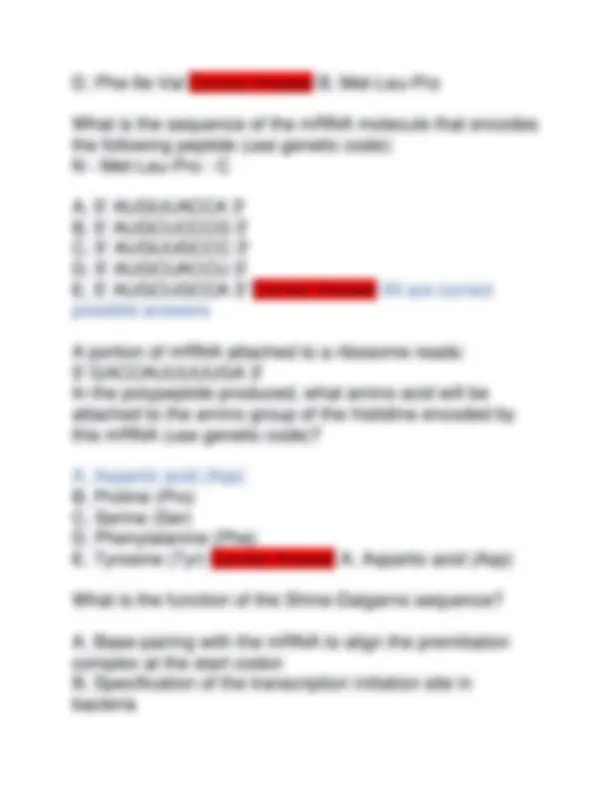
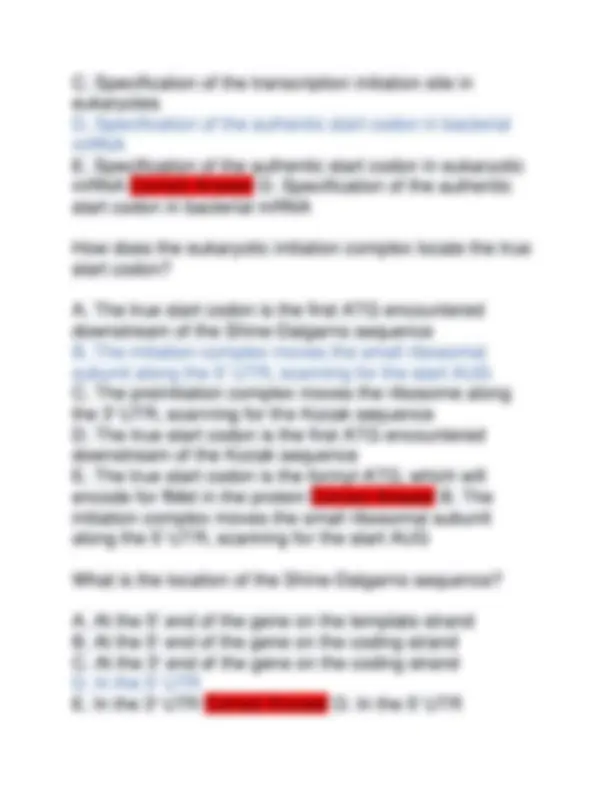
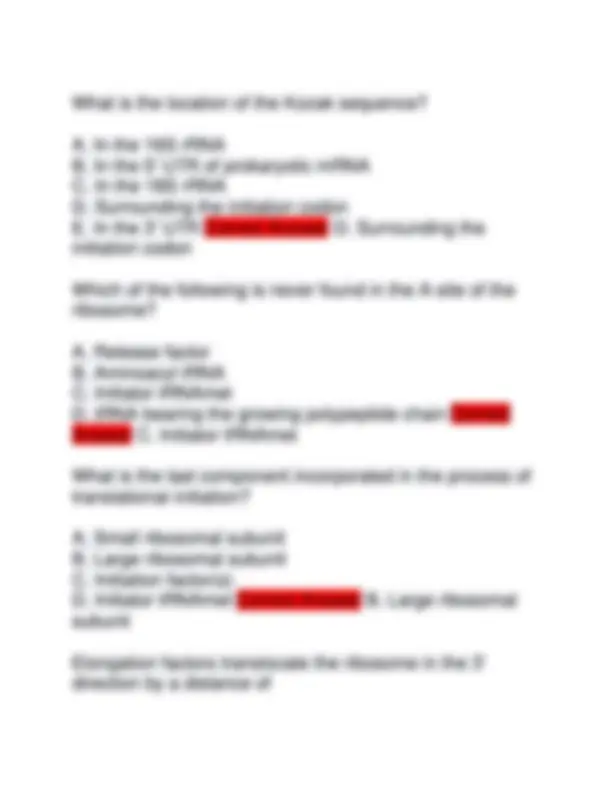
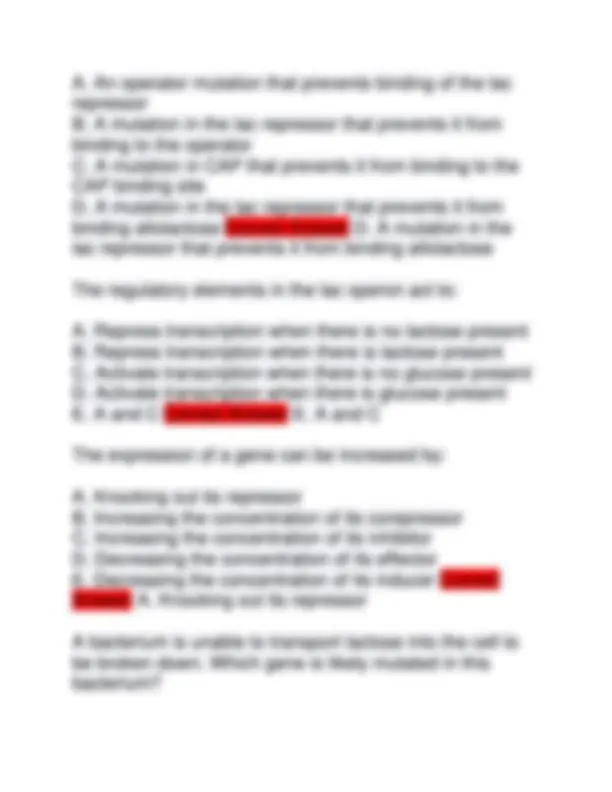
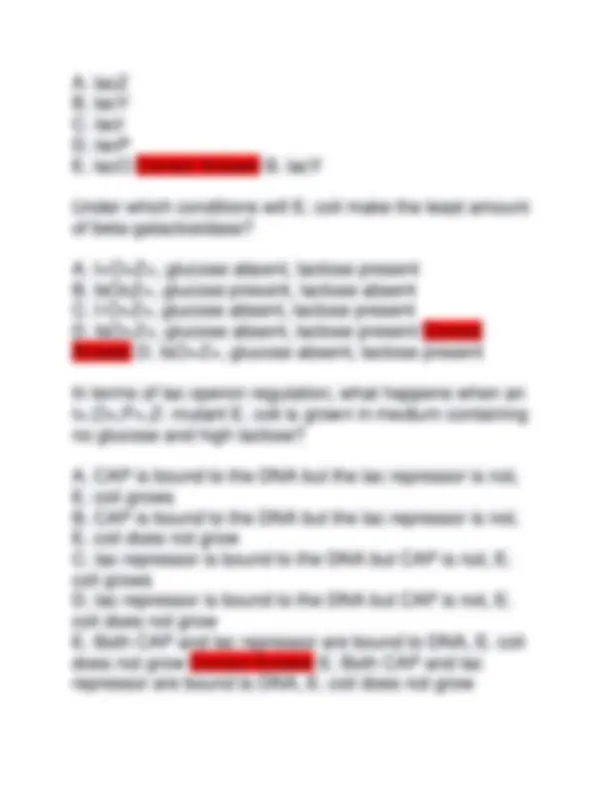
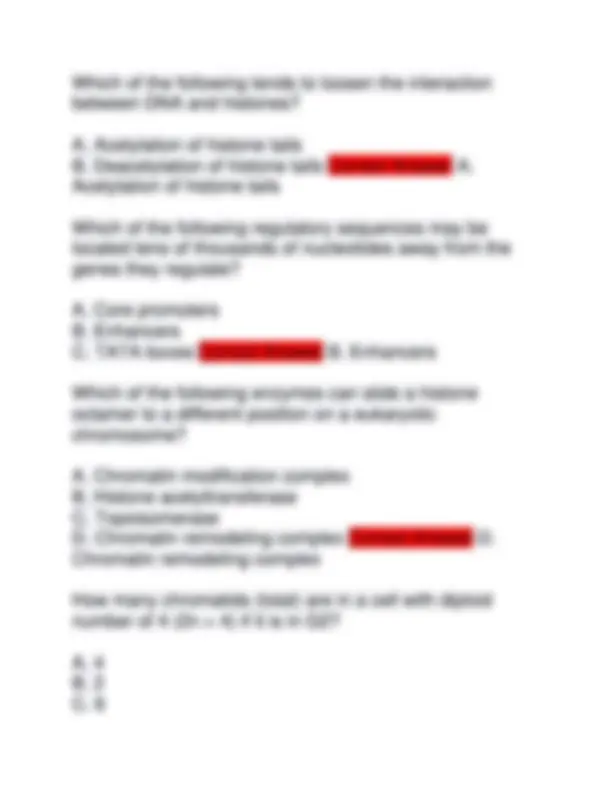
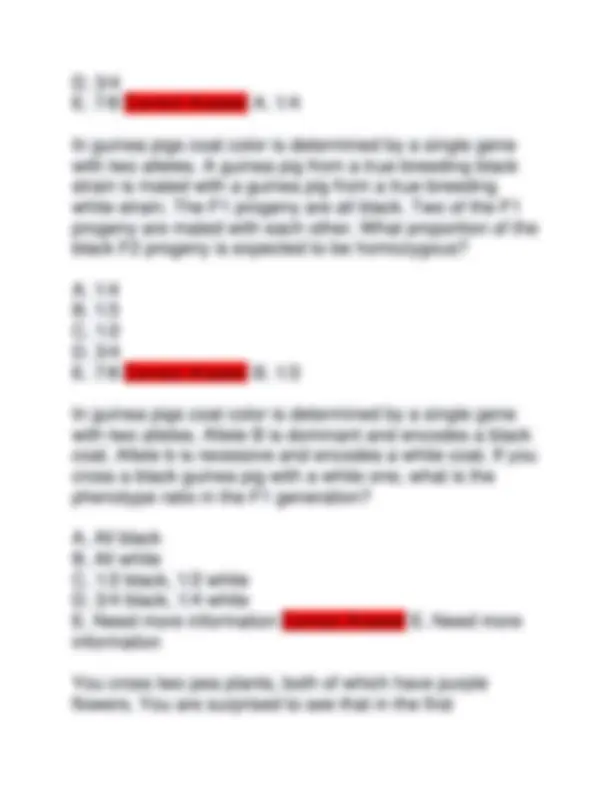
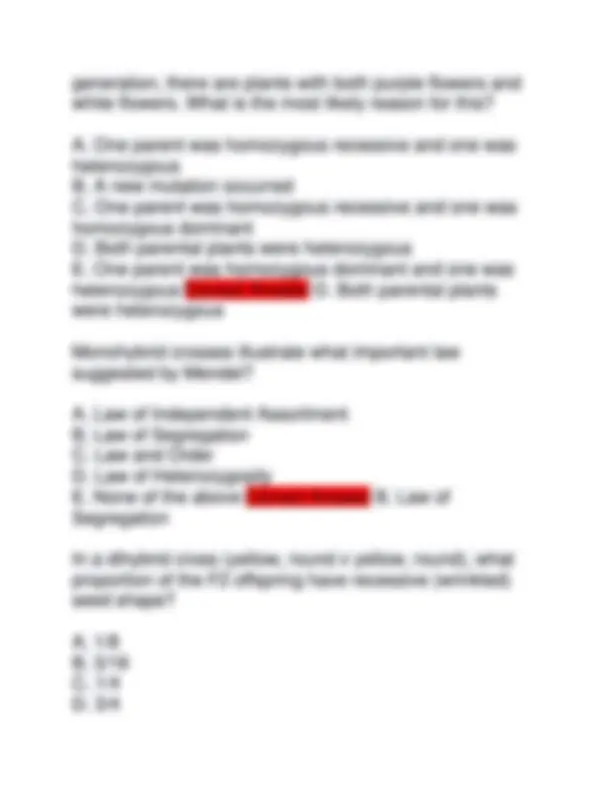
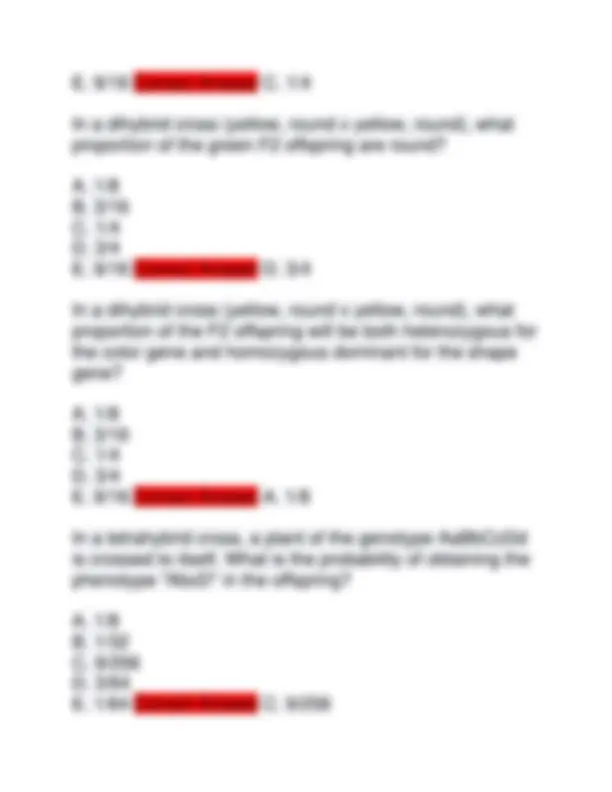
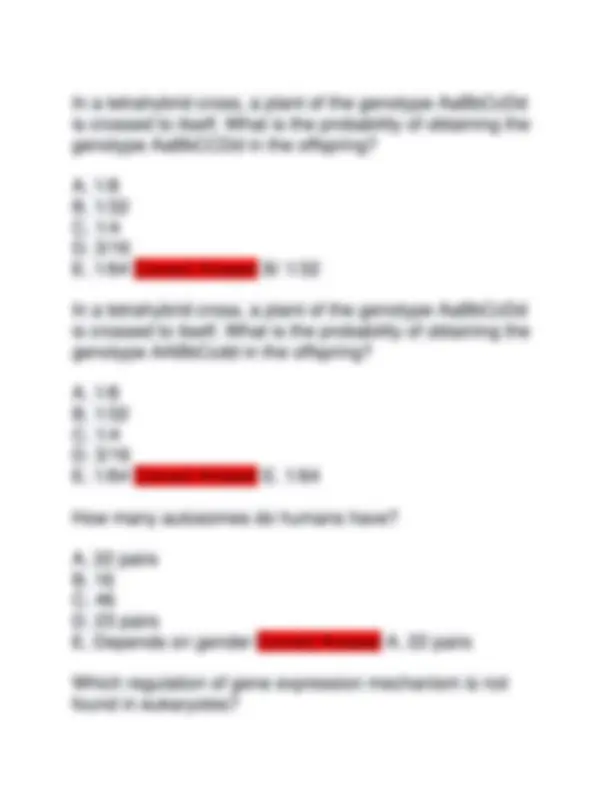
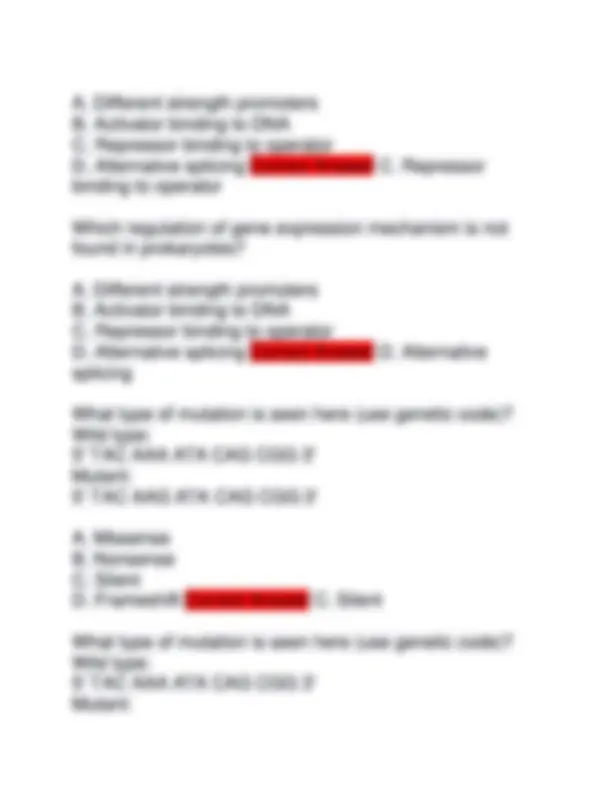
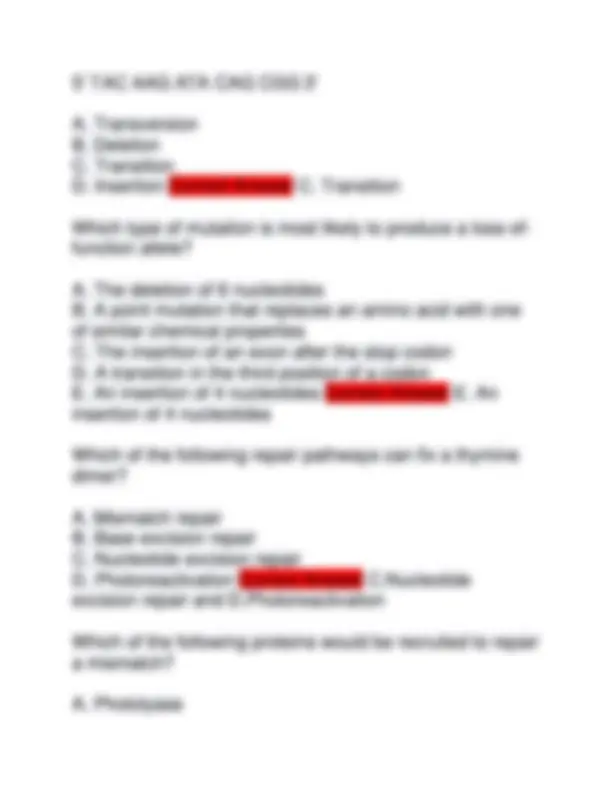
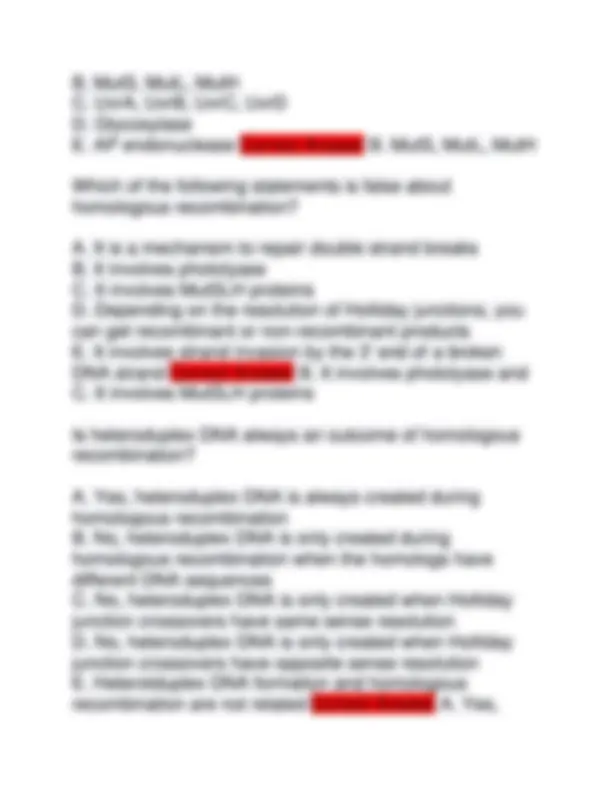
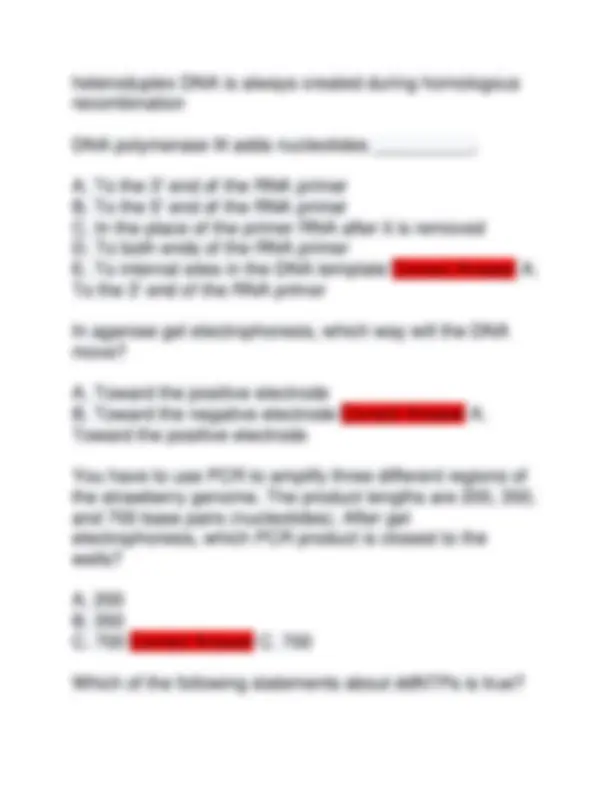
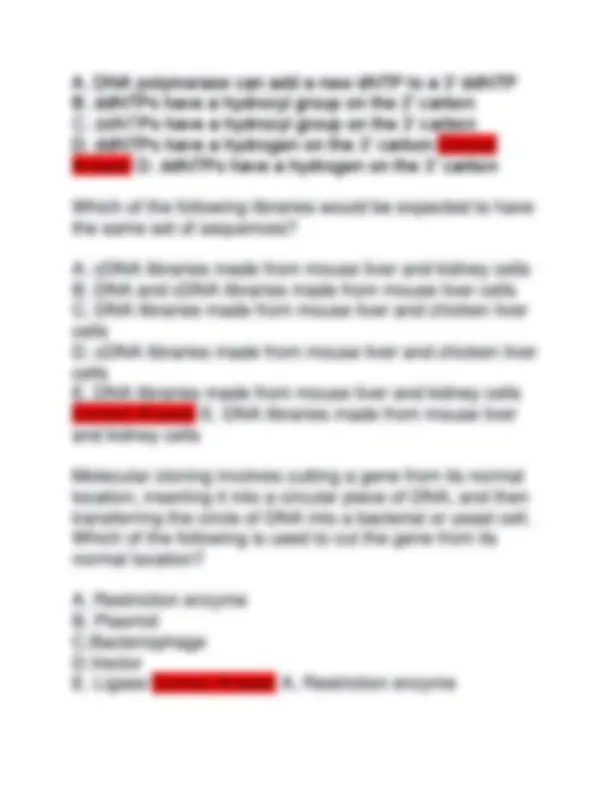
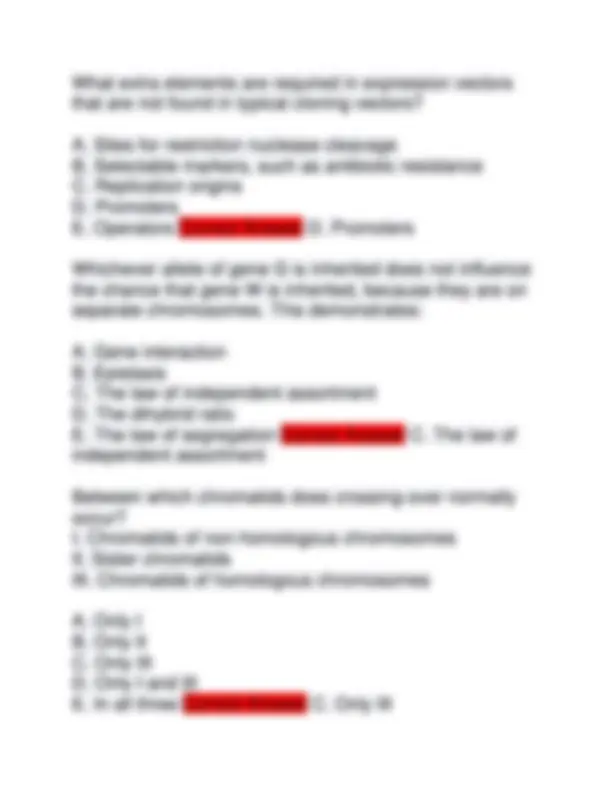
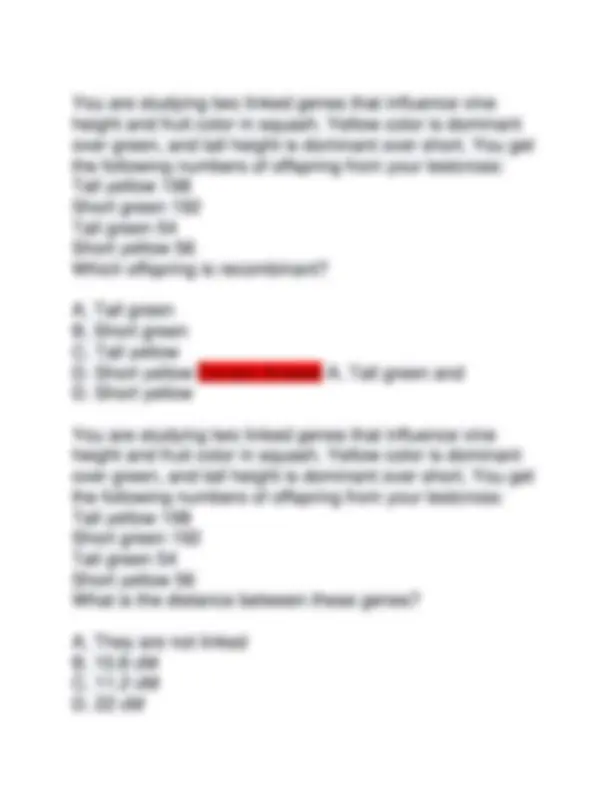
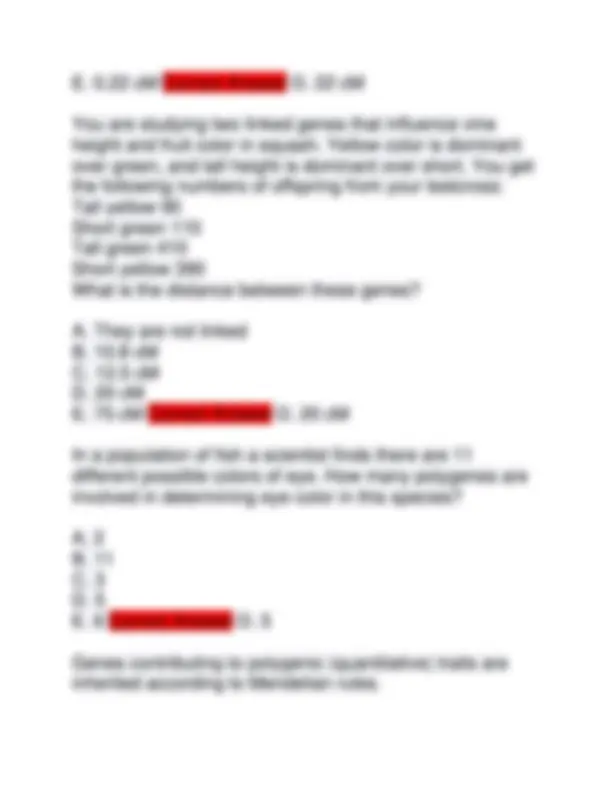
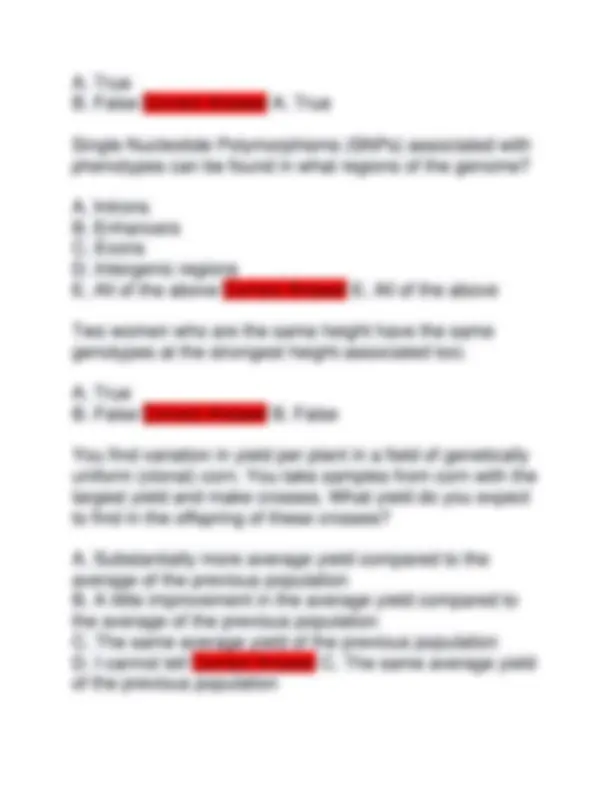
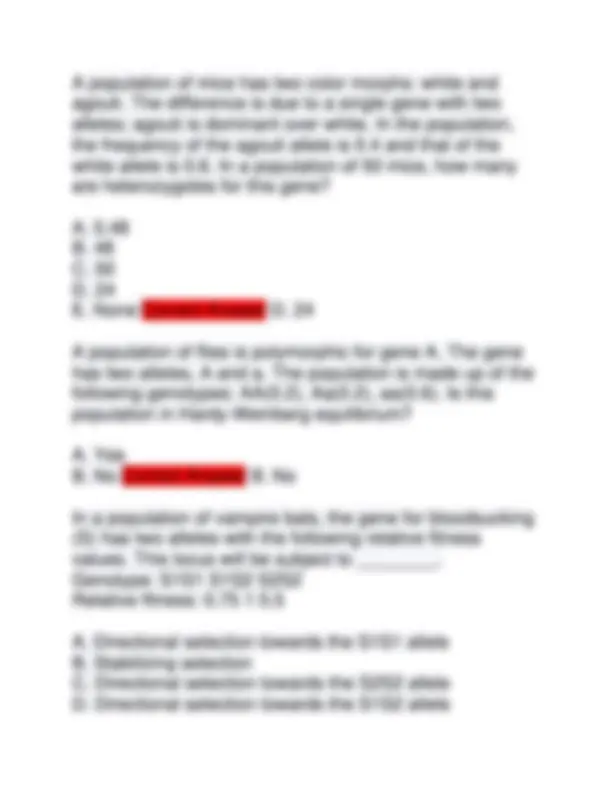
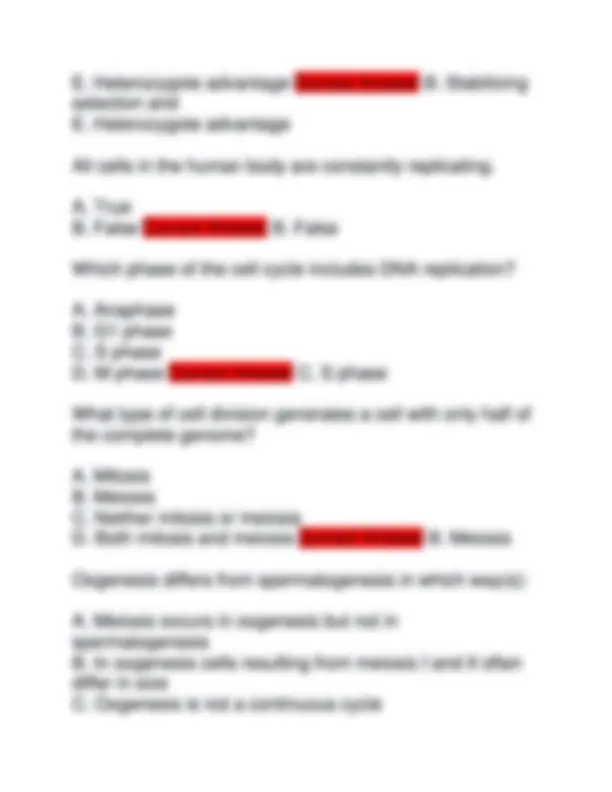
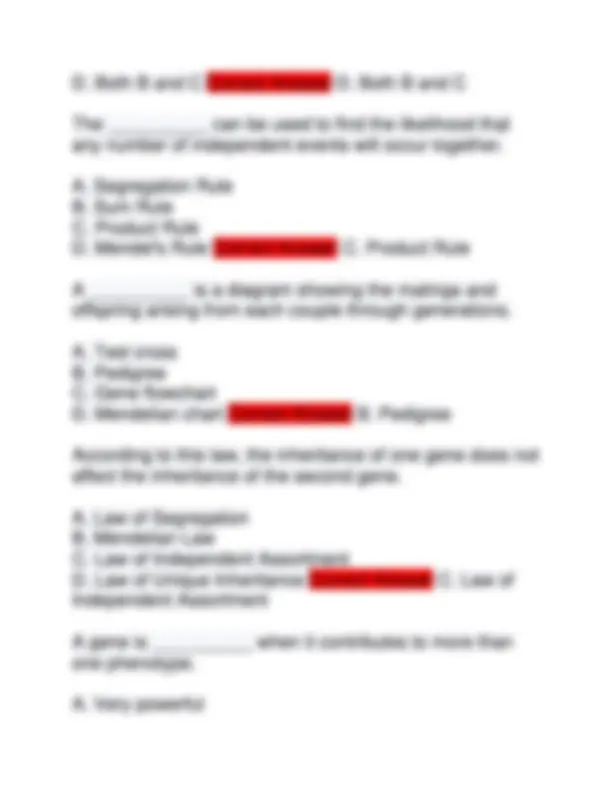
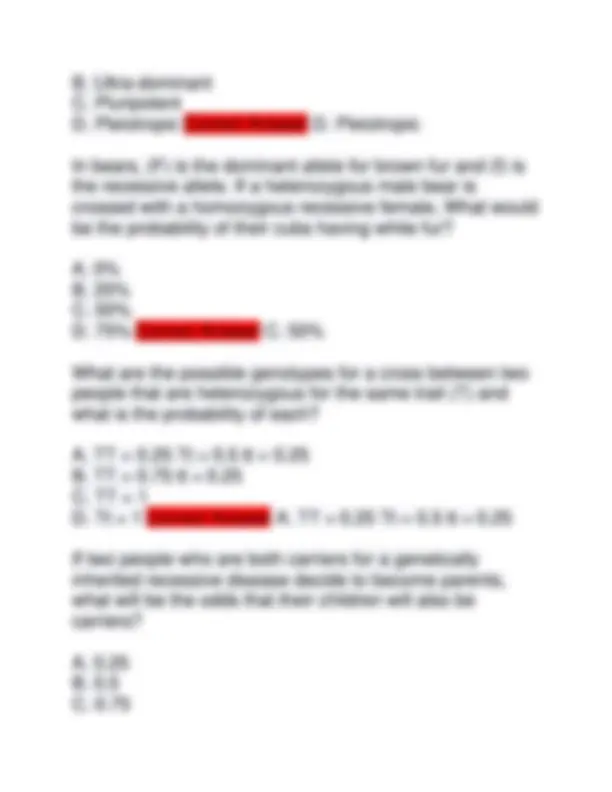
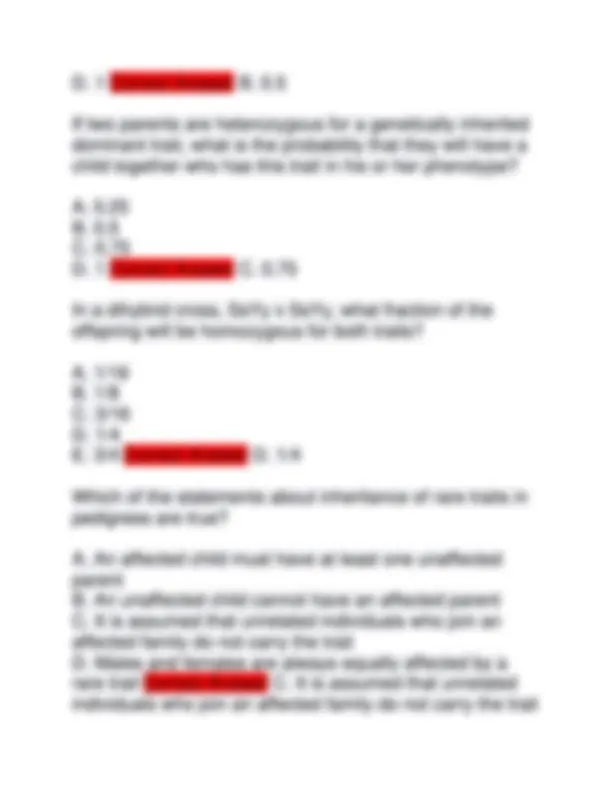
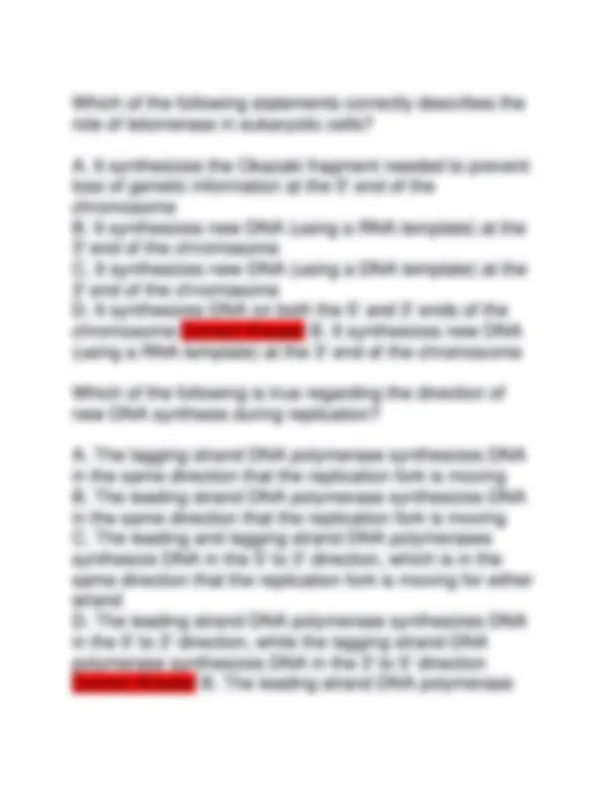
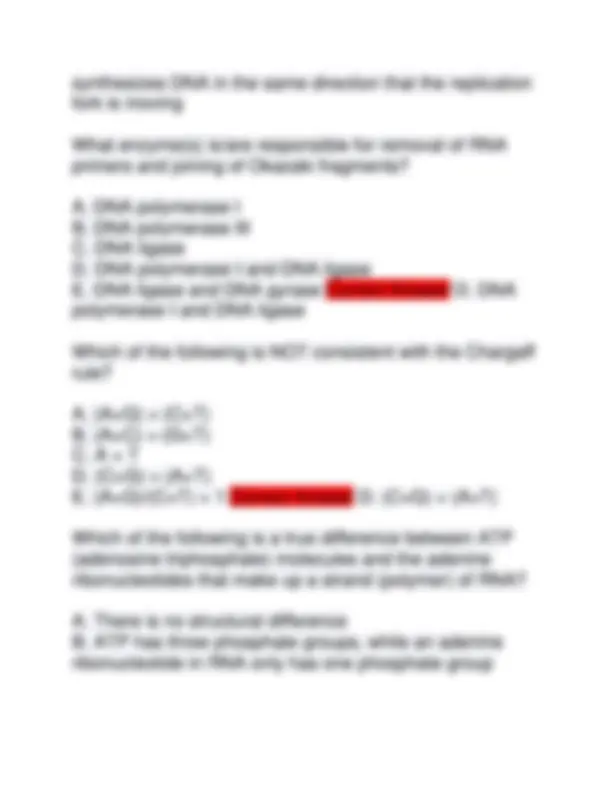
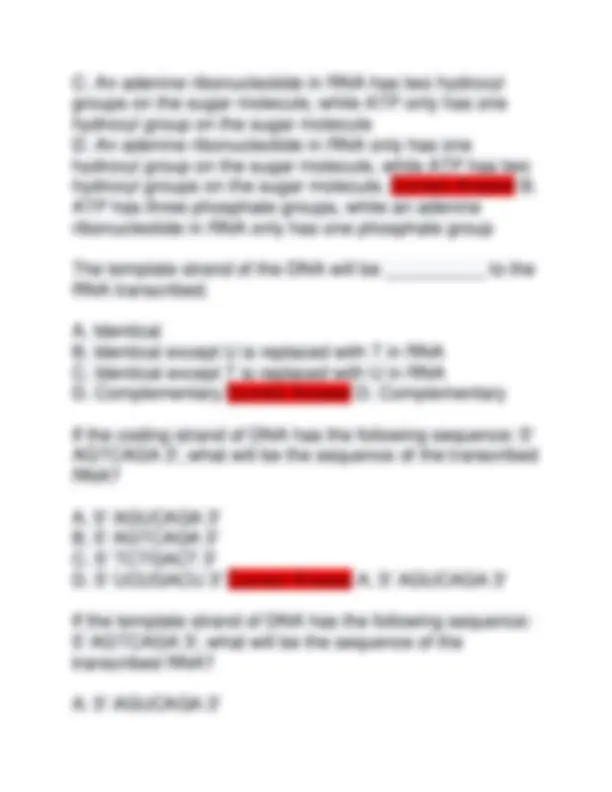
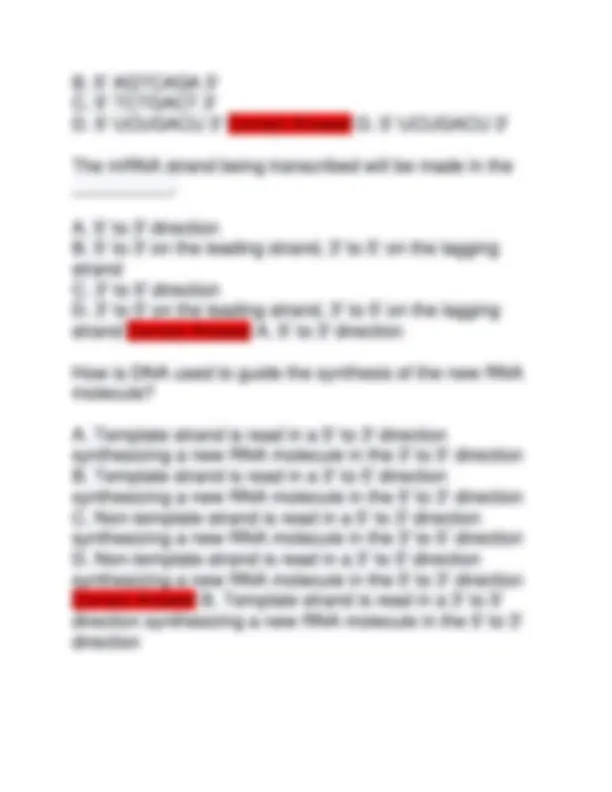
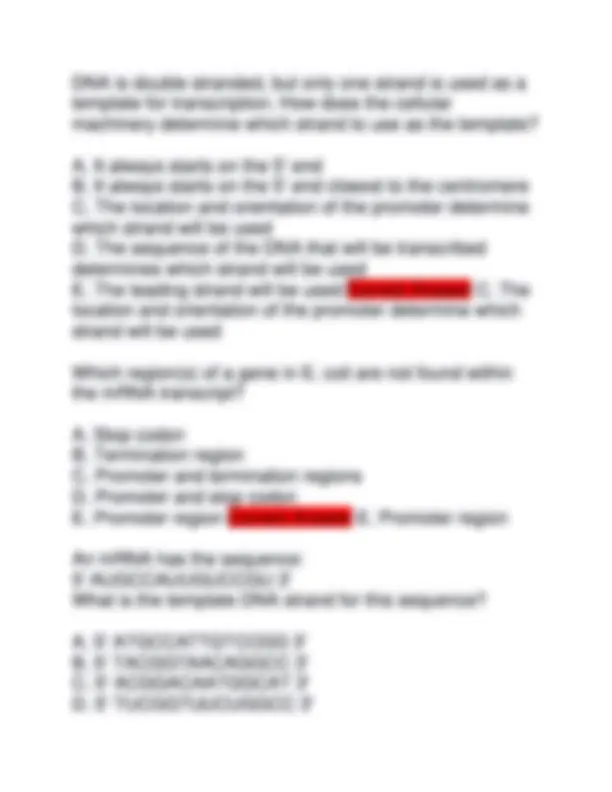
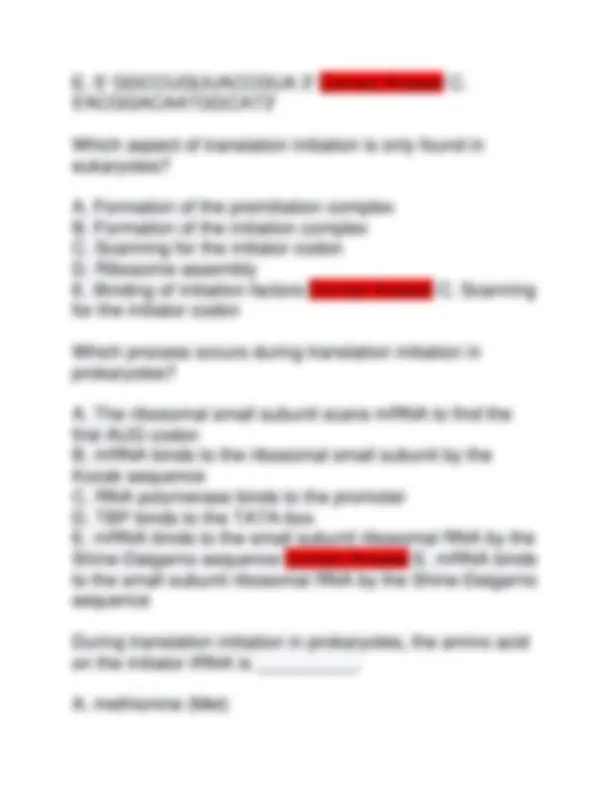
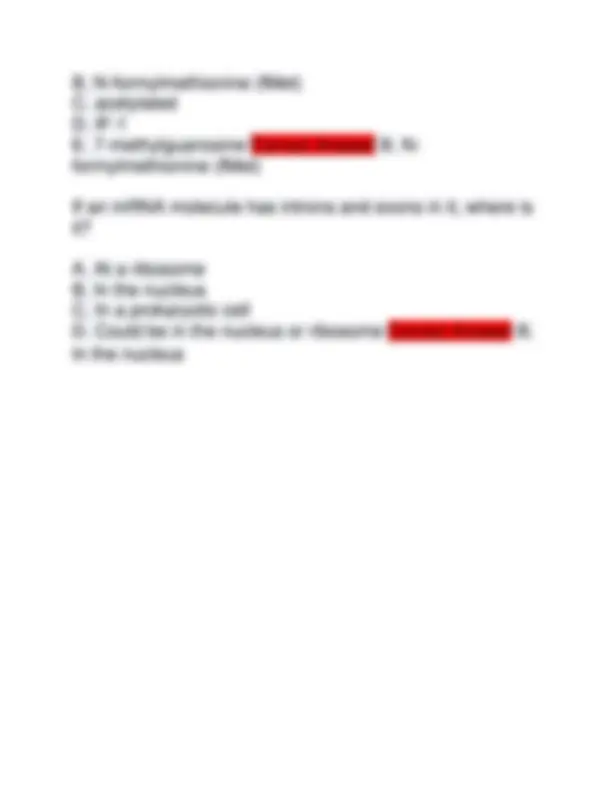


Study with the several resources on Docsity

Earn points by helping other students or get them with a premium plan


Prepare for your exams
Study with the several resources on Docsity

Earn points to download
Earn points by helping other students or get them with a premium plan
Community
Ask the community for help and clear up your study doubts
Discover the best universities in your country according to Docsity users
Free resources
Download our free guides on studying techniques, anxiety management strategies, and thesis advice from Docsity tutors
BIO 340 FINAL EXAM 2025-2026 LATEST QUESTIONS AND DETAILED CORRECT ANSWERS (VERIFIED ANSWERS) | A+ GRADE
Typology: Exams
1 / 42

This page cannot be seen from the preview
Don't miss anything!



































A geneticist is studying flower-color mutations in petunias. He finds two recessive mutants that have white flowers, rather than the wildtype purple. He crosses a homozygote for the first mutation with a homozygote for the second mutation. All the offspring have white flowers. Which of the following offspring is the best way to write the genotype of these offspring? A. Aa B. aa C. a1a D. a1a E. Aa1Bb1 Correct Answer D. a1a Snapdragons show incomplete dominance of red and white flower coloration, demonstrated by crossing an R1/R1 red flowered plant and an R2/R2 white flowered plant, producing pink offspring. Suppose the gene interaction was instead codominance, what could be a possible offspring phenotype in this cross? A. All red flowers B. Red and white flowers in a 3:1 ratio
C. All red flowers with white spots D. All pink flowers Correct Answer C. All red flowers with white spots A portion of one strand of DNA has the sequence 5' AATGGCTTA 3' What is the sequence of the other strand? A. 3' TTACCGAAT 5' B. 5' TAAGCCATT 3' C. 3' AATGGCTTA 5' D. 5' AATGGCTTA 3' Correct Answer A. 3' TTACCGAAT 5' and B. 5' TAAGCCATT 3' Each of the four DNA molecules below is gradually heated. Which molecule will melt (denature) last? A. 5' ATATCGATTA 3' 3' TATAGCTAAT 5' B. 5' ACGGATGCAC 3' 3' TGCCTACGTG 5' C. 5' GCGCCCGGCG 3' 3' CGCGGGCCGC 5' D. 5' CGCCGGATGC 3' 3' GCGGCCTACG 5' Correct Answer C. 5'GCGCCCGGCG3' 3'CGCGGGCCGC5'
A. RNA polymerase makes copies of RNA; DNA polymerase makes copies of DNA B. RNA polymerase requires an RNA primer; DNA polymerase requires a DNA primer C. RNA polymerase does not require a helicase; DNA polymerase does D. RNA polymerase has two subunits, DNA polymerase has many subunits Correct Answer C. RNA polymerase does not require a helicase; DNA polymerase does RNA transcribed from a gene will be complementary and antiparallel to which of the following? A. The coding strand of the DNA B. The non-template strand of the DNA C. Both strands of the DNA D. The template strand of the DNA E. The leading strand of the DNA Correct Answer D. The template strand of the DNA Which of the following is true about promoters? A. A promoter is a region of DNA upstream of the transcribed region B. A promoter is a region of DNA where RNA polymerase binds C. A promoter has conserved sequence elements where transcription factors can bind D. A promoter is located to the 3' end of the transcribed region of the template strand E. All of the above Correct Answer E. All of the above
Which of the following describes the first transesterification reaction in nuclear mRNA splicing? A. Joining the 3' end of exon 1 to the 5' end of exon 2 B. Joining the 3' end of exon 1 to the branch site A C. Joining the 3' end of the intron to the branch site A D. Joining the 5' end of the intron to the branch site A E. Joining the 5' end of exon 2 to the branch site A Correct Answer D. Joining the 5' end of the intron to the branch site A Which of the following describes the second transesterification reaction in nuclear mRNA splicing? A. Joining the 3' end of exon 1 to the 5' end of exon 2 B. Joining the 3' end of exon 1 to the branch site A C. Joining the 3' end of the intron to the branch site A D. Joining the 5' end of the intron to the branch site A E. Joining the 5' end of exon 2 to the branch site A Correct Answer A. Joining the 3' end of exon 1 to the 5' end of exon 2 Which of the following types of RNA is found exclusively in eukaryotic cells? A. mRNA B. rRNA C. tRNA D. snRNA Correct Answer D. snRNA
B. The primary RNA transcript contains both introns and exons C. Exons are repeating sequences that are typically found at the ends of a chromosome D. The mature mRNA transcript only contains the introns because the exons have been spliced out Correct Answer B. The primary RNA transcript contains both introns and exons Which of the following statements regarding mRNA information and orientation is true? A. The amino terminus of a polypeptide is encoded toward the 5' end of the mRNA B. The carboxy terminus of a polypeptide is encoded toward the 5' end of the mRNA C. The amino terminus of a polypeptide is encoded toward the 3' end of the mRNA D. The amino terminus of a polypeptide is encoded in the 5' UTR E. The carboxy terminus of a polypeptide is encoded in the 5' UTR Correct Answer A. The amino terminus of a polypeptide is encoded toward the 5' end of the mRNA Given this section of an mRNA molecule 5' AUGUUACCA 3' (use the genetic code), determine the amino acid sequence of the translated polypeptide. A. His-Thr-Arg B. Met-Leu-Pro C. Ala-Gly-Asp
D. Phe-Ile-Val Correct Answer B. Met-Leu-Pro What is the sequence of the mRNA molecule that encodes the following peptide (use genetic code): N - Met-Leu-Pro - C A. 5' AUGUUACCA 3' B. 5' AUGCUCCCG 3' C. 5' AUGUUGCCC 3' D. 5' AUGCUACCU 3' E. 5' AUGCUGCCA 3' Correct Answer All are correct possible answers A portion of mRNA attached to a ribosome reads: 5' GACCAUUUUUGA 3' In the polypeptide produced, what amino acid will be attached to the amino group of the histidine encoded by this mRNA (use genetic code)? A. Aspartic acid (Asp) B. Proline (Pro) C. Serine (Ser) D. Phenylalanine (Phe) E. Tyrosine (Tyr) Correct Answer A. Aspartic acid (Asp) What is the function of the Shine-Dalgarno sequence? A. Base-pairing with the mRNA to align the preinitiation complex at the start codon B. Specification of the transcription initiation site in bacteria
What is the location of the Kozak sequence? A. In the 16S rRNA B. In the 5' UTR of prokaryotic mRNA C. In the 18S rRNA D. Surrounding the initiation codon E. In the 3' UTR Correct Answer D. Surrounding the initiation codon Which of the following is never found in the A-site of the ribosome? A. Release factor B. Aminoacyl tRNA C. Initiator tRNAmet D. tRNA bearing the growing polypeptide chain Correct Answer C. Initiator tRNAmet What is the last component incorporated in the process of translational initiation? A. Small ribosomal subunit B. Large ribosomal subunit C. Initiation factor(s) D. Initiator tRNAmet Correct Answer B. Large ribosomal subunit Elongation factors translocate the ribosome in the 3' direction by a distance of
A. One codon B. One nucleotide C. Two nucleotides D. Two codons E. Three codons Correct Answer A. One codon What will be the effect on transcription when an inhibitor is in play? A. Allow transcription B. Prevent transcription Correct Answer B. Prevent transcription What will be the effect on transcription when an inducer is in play? A. Allow transcription B. Prevent transcription Correct Answer A. Allow transcription For a gene under positive control, which of the following would prevent transcription? A. Repressor B. Corepressor C. Inducer D. Effector E. Inhibitor Correct Answer E. Inhibitor
A. An operator mutation that prevents binding of the lac repressor B. A mutation in the lac repressor that prevents it from binding to the operator C. A mutation in CAP that prevents it from binding to the CAP binding site D. A mutation in the lac repressor that prevents it from binding allolactose Correct Answer D. A mutation in the lac repressor that prevents it from binding allolactose The regulatory elements in the lac operon act to: A. Repress transcription when there is no lactose present B. Repress transcription when there is lactose present C. Activate transcription when there is no glucose present D. Activate transcription when there is glucose present E. A and C Correct Answer E. A and C The expression of a gene can be increased by: A. Knocking out its repressor B. Increasing the concentration of its corepressor C. Increasing the concentration of its inhibitor D. Decreasing the concentration of its effector E. Decreasing the concentration of its inducer Correct Answer A. Knocking out its repressor A bacterium is unable to transport lactose into the cell to be broken down. Which gene is likely mutated in this bacterium?
A. lacZ B. lacY C. lacI D. lacP E. lacO Correct Answer B. lacY Under which conditions will E. coli make the least amount of beta-galactosidase? A. I+O+Z+, glucose absent, lactose present B. IsOcZ+, glucose present, lactose absent C. I-O+Z+, glucose absent, lactose present D. IsO+Z+, glucose absent, lactose present Correct Answer D. IsO+Z+, glucose absent, lactose present In terms of lac operon regulation, what happens when an I+,O+,P+,Z- mutant E. coli is grown in medium containing no glucose and high lactose? A. CAP is bound to the DNA but the lac repressor is not, E. coli grows B. CAP is bound to the DNA but the lac repressor is not, E. coli does not grow C. lac repressor is bound to the DNA but CAP is not, E. coli grows D. lac repressor is bound to the DNA but CAP is not, E. coli does not grow E. Both CAP and lac repressor are bound to DNA, E. coli does not grow Correct Answer E. Both CAP and lac repressor are bound to DNA, E. coli does not grow
E. 16 Correct Answer D. 8 At which points in the cell cycle do you not see chromosomes, but only uncondensed DNA? A. During Gap 1 when proteins for cell growth are being manufactured B. During Synthesis when DNA is replicated C. During Gap 2 when protein microtubules for the spindle fibers are being made D. During G0 when the cell is quiescent E. During all of the above Correct Answer E. During all of the above In a 2n = 6 organism, how many chromatids are present in each individual cell immediately at the end of meiosis? A. 1 B. 2 C. 3 D. 4 E. 6 Correct Answer C. 3 In a 2n = 6 organism, how many chromatids are present in each individual cell at prophase II? A. 1 B. 2 C. 3 D. 4
E. 6 Correct Answer E. 6 In a 2n = 6 organism, are the cells haploid or diploid at prophase II? A. Haploid B. Diploid Correct Answer A. Haploid What strategies were helpful when Gregor Mendel studied patterns of inheritance? I. Study an organism with a long generation time II. Study an organism with few offspring per generation III. Focus on many traits at a time IV. Look at discontinuous traits A. Only I B. Only III C. Only IV D. All of these E. None of these Correct Answer C. Only IV In guinea pigs coat color is determined by a single gene with two alleles. A guinea pig from a true-breeding black strain is mated with a guinea pig from a true-breeding white strain. The F1 progeny are all black. Two of the F progeny are mated with each other. What proportion of the F2 progeny is expected to be white? A. 1/ B. 1/ C. 1/
generation, there are plants with both purple flowers and white flowers. What is the most likely reason for this? A. One parent was homozygous recessive and one was heterozygous B. A new mutation occurred C. One parent was homozygous recessive and one was homozygous dominant D. Both parental plants were heterozygous E. One parent was homozygous dominant and one was heterozygous Correct Answer D. Both parental plants were heterozygous Monohybrid crosses illustrate what important law suggested by Mendel? A. Law of Independent Assortment B. Law of Segregation C. Law and Order D. Law of Heterozygosity E. None of the above Correct Answer B. Law of Segregation In a dihybrid cross (yellow, round x yellow, round), what proportion of the F2 offspring have recessive (wrinkled) seed shape? A. 1/ B. 3/ C. 1/ D. 3/
E. 9/16 Correct Answer C. 1/ In a dihybrid cross (yellow, round x yellow, round), what proportion of the green F2 offspring are round? A. 1/ B. 3/ C. 1/ D. 3/ E. 9/16 Correct Answer D. 3/ In a dihybrid cross (yellow, round x yellow, round), what proportion of the F2 offspring will be both heterozygous for the color gene and homozygous dominant for the shape gene? A. 1/ B. 3/ C. 1/ D. 3/ E. 9/16 Correct Answer A. 1/ In a tetrahybrid cross, a plant of the genotype AaBbCcDd is crossed to itself. What is the probability of obtaining the phenotype "AbcD" in the offspring? A. 1/ B. 1/ C. 9/ D. 3/ E. 1/64 Correct Answer C. 9/